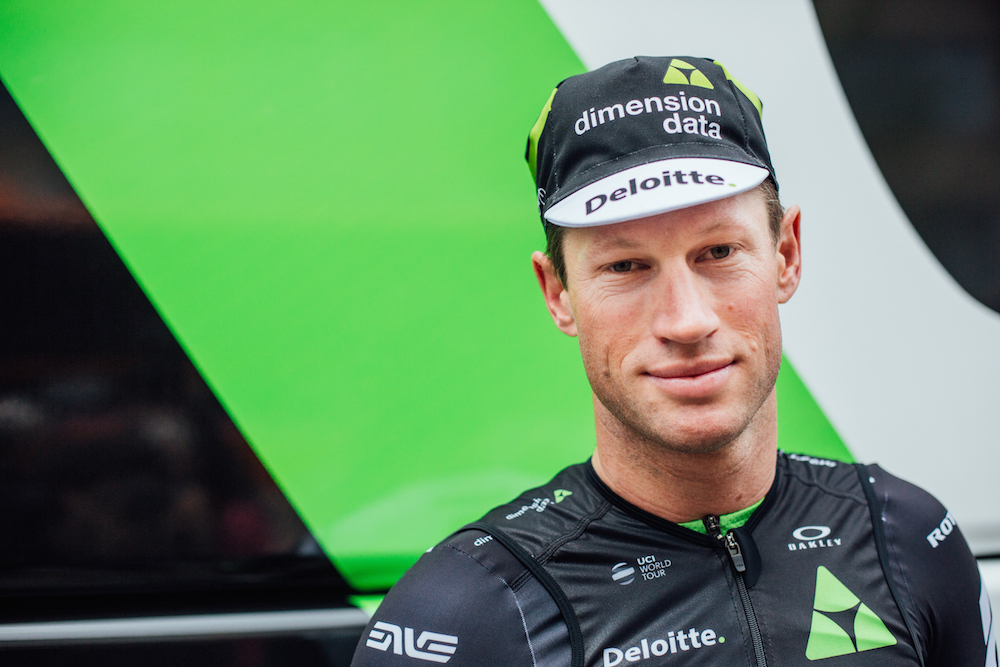Mark Renshaw: how to be a lead-out rider, and why he works so well with Mark Cavendish
What does it take to be a lead-out rider? Cycling Weekly spoke to Australian Mark Renshaw — one of the best in the peloton and Mark Cavendish's team-mate — to find out

In front of every great sprinter is usually a great lead-out rider. Someone to safely navigate them through the chaos of a bunch finish, ensure they don’t waste energy they need for the sprint, keep them out of trouble, and get them to the perfect place so they can launch their attack and — hopefully — take the victory.
While the sprinter may be the one that takes the spoils, gets the trophies and enjoys the podium celebrations, often they wouldn’t be there if it wasn’t for their lead out. It’s a selfless job but one that comes with responsibility — mess up and it’s not your own chance at a race win you could end, but that of your team-mate.
One of the peloton’s most experienced lead-out men is Mark Renshaw, chief lieutenant and right-hand man to Mark Cavendish. This season is the seventh the duo has raced together having first paired up at Colombia-HTC in 2009.
The 34-year-old Australian has been alongside the Manxman at almost all of his major career victories on the road; of Cavendish’s 30 Tour de France stage wins, Renshaw has played a role in 19 of them.
So what does Renshaw thinks are the key traits to being a lead-out rider?
“Experience — that’s probably the main thing. If you don’t have the experience then I suppose the feeling for positioning is probably the most important,” Renshaw told Cycling Weekly.
“I came from a sprinting background so I know what position you need to win, but I never had the legs to win. I know the position but I never had the power. I was always good over a longer sprint, I suppose that’s how I fell into doing lead-out. I just missed that little bit extra punch.”
The latest race content, interviews, features, reviews and expert buying guides, direct to your inbox!

MARK CAVENDISH WINS STAGE TWENTY ONE OF THE 2009 TOUR DE FRANCE
Of course, having a good sprinter to pair with, Renshaw admits, does make him look even better at his job. Before Cavendish, Renshaw led-out Thor Hushovd at Credit-Agricole and though he says he did some of his best lead-outs then, the Norwegian didn’t have the same pure speed to always get the result like Cavendish.
“I probably did some of my best lead-outs for him as well but he didn’t have that pure speed that Cavendish has,” Renshaw says. “He was always second, third or fourth, probably coming from the best position but not having the best power.”
When HTC disbanded in 2011 Renshaw and Cavendish parted ways, before reuniting in 2014 at Omega Pharma-Quickstep and moving to Dimension Data together in 2016. This season however, both riders have been hampered by injury and illness – Cavendish has been out with glandular fever and hasn’t raced for three months, while Renshaw suffered an ankle injury in a crash at Scheldeprijs and only returned to racing at the Tour of California.
The duo are set to race together at the Tour of Slovenia (June 15-18), with Cavendish hoping to prove his fitness to get selected for the Tour de France which starts in just over two weeks' time.
Such was Renshaw’s impact when he and Cavendish first paired up, that first season they partnered together is still the most prolific of Cavendish’s career so far with 22 wins. Though the Australian says the partnership didn’t “click straight away” recalling their first race on stage three of the Tour of California when he finished third and Cavendish fourth, they rectified things pretty quickly — Cavendish took wins the next two days.
“Our characteristics are complete opposite,” Renshaw says of their relationship. “That’s probably why it works really well in the race because one guy has one certain type of view and the other guy has another view and we meet somewhere in the middle. If you had two hot heads or two really calm guys it wouldn’t work.
“To be a sprinter you have to be aggressive because that’s what sprinting is. Leading out you have to be more patient and still have that little bit of aggressiveness, which is probably what my traits are.”

Now, the team directors will do most of the research before a race into the route and how the finale might pan out, with experienced riders like Renshaw, Cavendish and Bernie Eisel adding their thoughts. Yet while there may be a “perfect scenario” to how a sprint pans out, it doesn’t often work that way.
“More often than not you plan on the perfect scenario and it’s up to the riders to juggle on the run in and make it work,” Renshaw says, explaining he and Cavendish work almost entirely on instinct now.
“He leaves it up to me to make sure he’s in the right position,” Renshaw explains. “I try to look behind every now and then to make sure he’s there; if he loses the wheel he’ll yell out. If he can let me know quick enough then I can hesitate that moment and wait for him to come back. Otherwise there’s not so much talking going on.”
A lead out rider may be one of the highest pressured roles in cycling, where making split second decisions could mean the difference between winning or losing. But the high pressure isn’t a problem to Renshaw.
“That’s why I enjoy it, the part of the job I enjoy doing.”